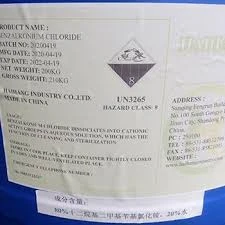Innovative Techniques in Polyacrylamide Production for Enhanced Efficiency and Sustainability
Understanding Polyacrylamide Production A Comprehensive Overview
Polyacrylamide is a synthetic polymer commonly utilized in various industrial applications, including water treatment, soil conditioning, and as a flocculant in mining processes. Its unique properties, such as high molecular weight and excellent water retention capacity, make it an essential material in enhancing the efficiency of different operations. In this article, we will delve into the production process of polyacrylamide, covering its raw materials, manufacturing techniques, and key applications.
Raw Materials for Polyacrylamide Production
The primary raw material for polyacrylamide production is acrylamide, a white crystalline solid that is soluble in water. Acrylamide is produced through the hydration of acrylonitrile, which is derived from propylene derived from oil and natural gas. The production of acrylamide involves several critical steps, including the catalytic hydration of acrylonitrile, where water is added to acrylonitrile under controlled conditions to yield acrylamide.
In addition to acrylamide, other components such as initiators and cross-linking agents are used during the polymerization process. Common initiators include potassium persulfate and ammonium persulfate, which facilitate the polymerization reaction by generating free radicals. Cross-linking agents, such as methylenebisacrylamide, can also be added to enhance the stability and viscosity of the final product.
Polymerization Process
The production of polyacrylamide involves the polymerization of acrylamide monomers. This reaction can be carried out using several methods, including solution polymerization, suspension polymerization, and emulsion polymerization. Each method has its advantages, depending on the desired properties of the final polymer.
1. Solution Polymerization This method involves dissolving acrylamide and other components in water, followed by heating to initiate the reaction. The solution is maintained under constant stirring to ensure uniform polymer chains are formed. This method typically results in high molecular weight polymers.
2. Suspension Polymerization In this method, the acrylamide is dispersed in an aqueous medium with the help of stabilizers. The polymerization reaction occurs in the form of beads, which can be collected and dried. This method is often used to produce polyacrylamide in a granular form, making it easy to handle.
3. Emulsion Polymerization Here, the polymerization occurs in a mixture of water and organic solvents, producing a stable emulsion. This approach often yields high molecular weight polyacrylamide with improved properties for specific applications.
polyacrylamide production

Regardless of the method chosen, the reaction conditions such as temperature, pH, and time must be carefully controlled to achieve the desired polymer characteristics. After polymerization, the product is typically neutralized, washed, and dried to eliminate any residual acrylamide, which is known to be toxic.
Applications of Polyacrylamide
Polyacrylamide finds extensive applications across various industries due to its versatility. Some significant applications include
1. Water Treatment Polyacrylamide is commonly used as a flocculant in water treatment plants. It aids in the removal of suspended particles from water, ensuring clean and safe drinking water.
2. Agriculture In agriculture, polyacrylamide is utilized as a soil conditioner. It enhances soil structure, increases water retention, and reduces erosion, thereby promoting healthy crop growth.
3. Mining In the mining industry, polyacrylamide acts as a flocculant to separate valuable minerals from ore. Its ability to bind particles aids in the efficient extraction of minerals.
4. Paper Production The paper industry uses polyacrylamide to improve the retention of fibers and fillers, leading to increased production efficiency and enhanced paper quality.
Conclusion
The production of polyacrylamide is a complex yet fascinating process involving innovative techniques and careful management of raw materials. Its wide range of applications demonstrates the importance of this polymer in modern industries, contributing significantly to advancements in water treatment, agriculture, mining, and many other fields. As technology continues to evolve, the methods and applications of polyacrylamide are likely to expand, further highlighting its crucial role in various sectors.
-
Pbtc Scale InhibitorPBTC: A Scale Protector for Industrial Water TreatmentNewsAug.05,2025
-
Organic Phosphonate: An Efficient Defender in the Field of Scale InhibitionNewsAug.05,2025
-
Hydrolyzed Polymaleic Anhydride: Green Pioneer in Scale Inhibition FieldNewsAug.05,2025
-
PAPEMP Polyamino Polyether Methylene Phosphonic Acid For SaleNewsAug.05,2025
-
Flocculant Water Treatment: A Pioneer in Purification in the Field of Water TreatmentNewsAug.05,2025
-
Benzyl Isothiazolinone: An Efficient and Broad-Spectrum Antibacterial Protective GuardNewsAug.05,2025





